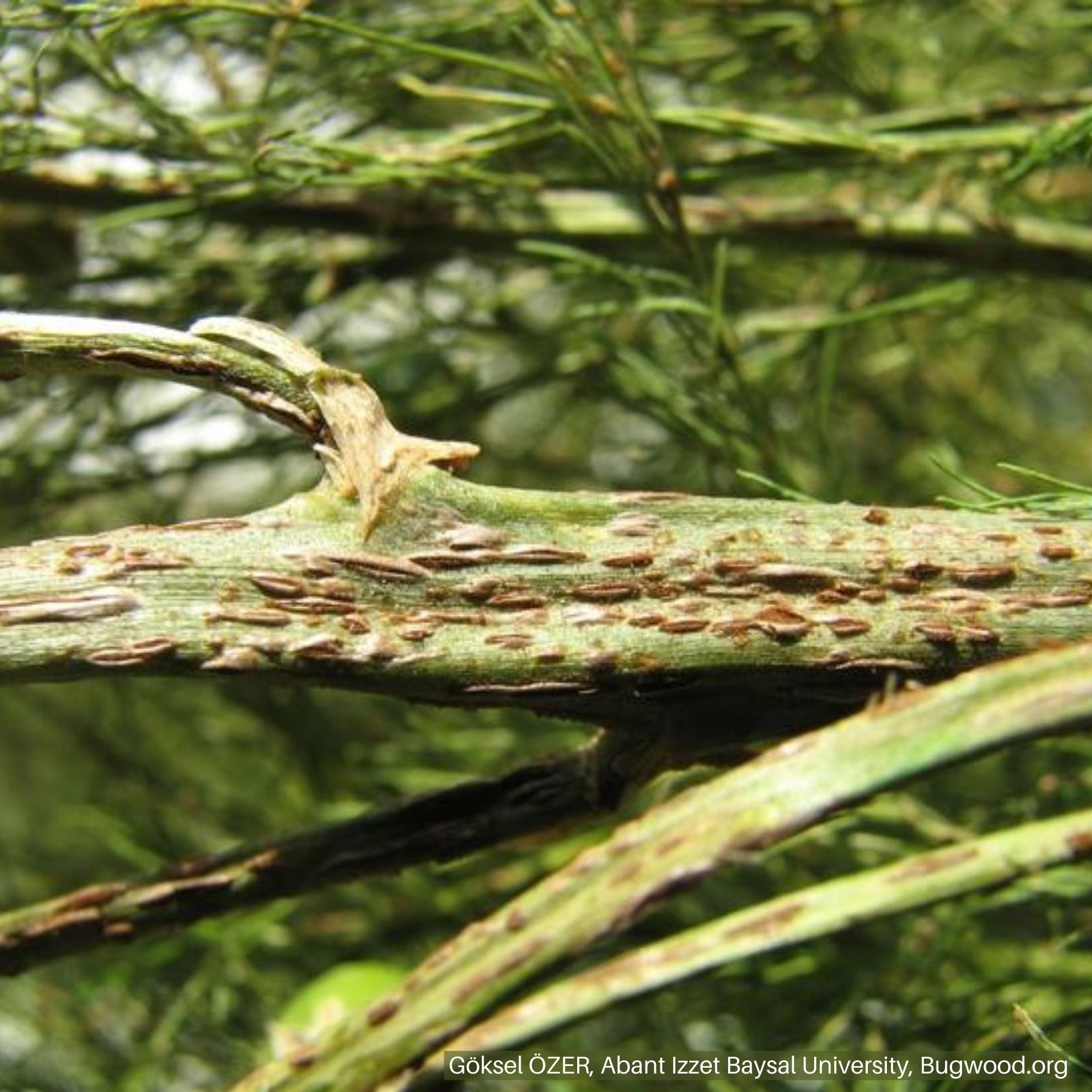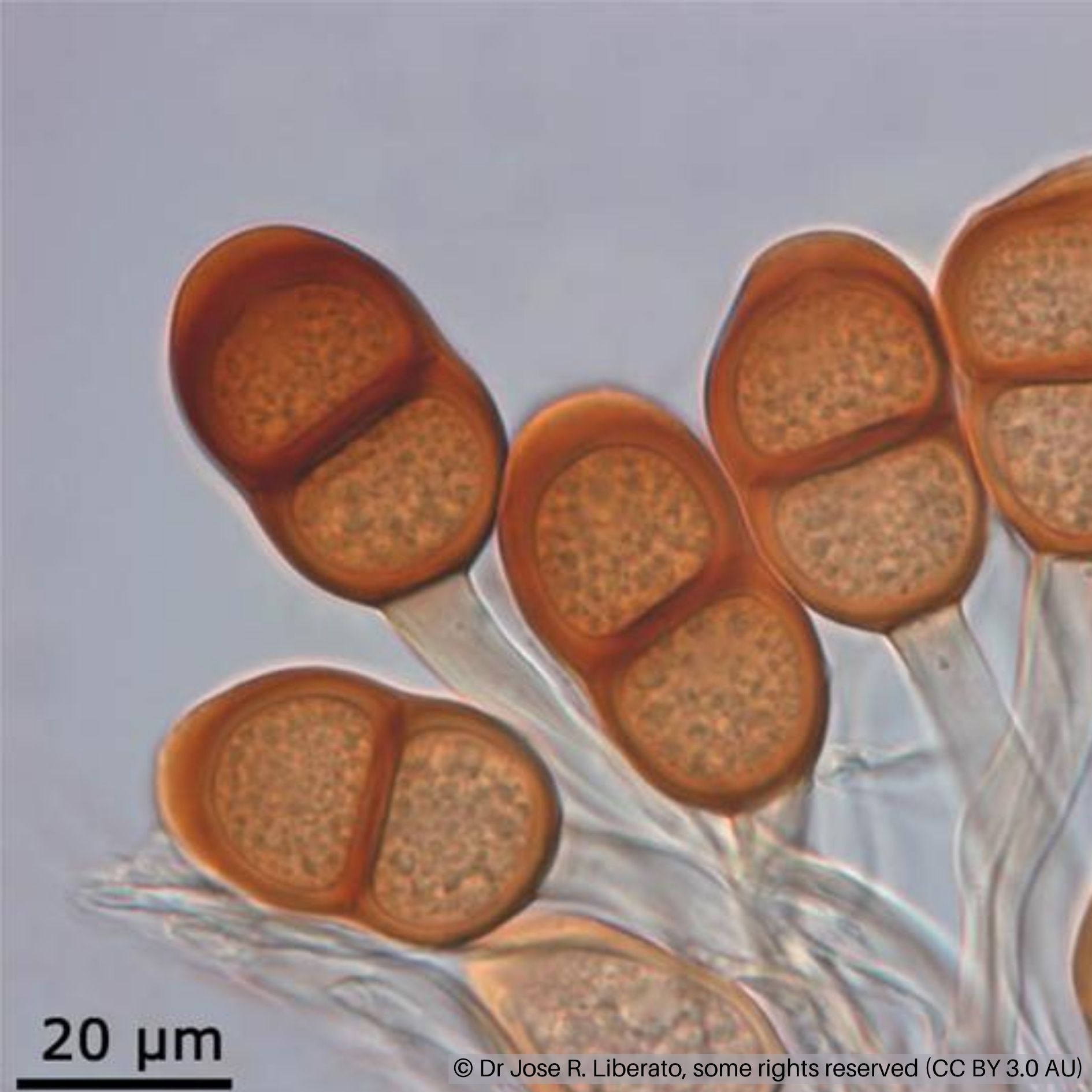Asparagus Rust
HOSTS
- Asparagus
DESCRIPTION
Rusts are fungal diseases found on multiple types of vegetable crops and are caused by pathogens in the genus Puccinia and Uromyces. Asparagus rust is caused by Puccinia asparagi.
BIOLOGY
Puccinia asparagi, the causal agent for rust in asparagus overwinters on crop debris as spores. In the spring, the spores, are released and spread through the air to infect new spears, stems, and foliage. The spread of P. asparagi is heavily influenced by wet conditions, as the spores require moisture to infect new hosts. Infected crops will develop small oval-shaped lesions. On young spears, these are light yellow-green and will mature into the characteristic orange-brown blisters. These lesions are the fruiting body of Puccinia asparagi, and produce spores until the weather cools when the lesions turn black and convert to the overwintering stage of the pathogen.
SYMPTOMS
- Small, oval-shaped growths on the top and underside of leaves, stalks, or branches. The lesions are usually yellow, brown, or red-colored, but can be dark brown or black late in the season.
- Discoloration and die-back of foliage.
GENERAL MANAGEMENT
- Remove volunteer and wild asparagus from around the fields.
- Remove infected crops during the growing season and before the emergence of new spears.
- Reduce excess moisture by avoiding overhead irrigation and overwatering and placing plants with adequate spacing for ventilation.
- Choose asparagus cultivars that are “slow-rusting” or tolerant of the pathogen.





